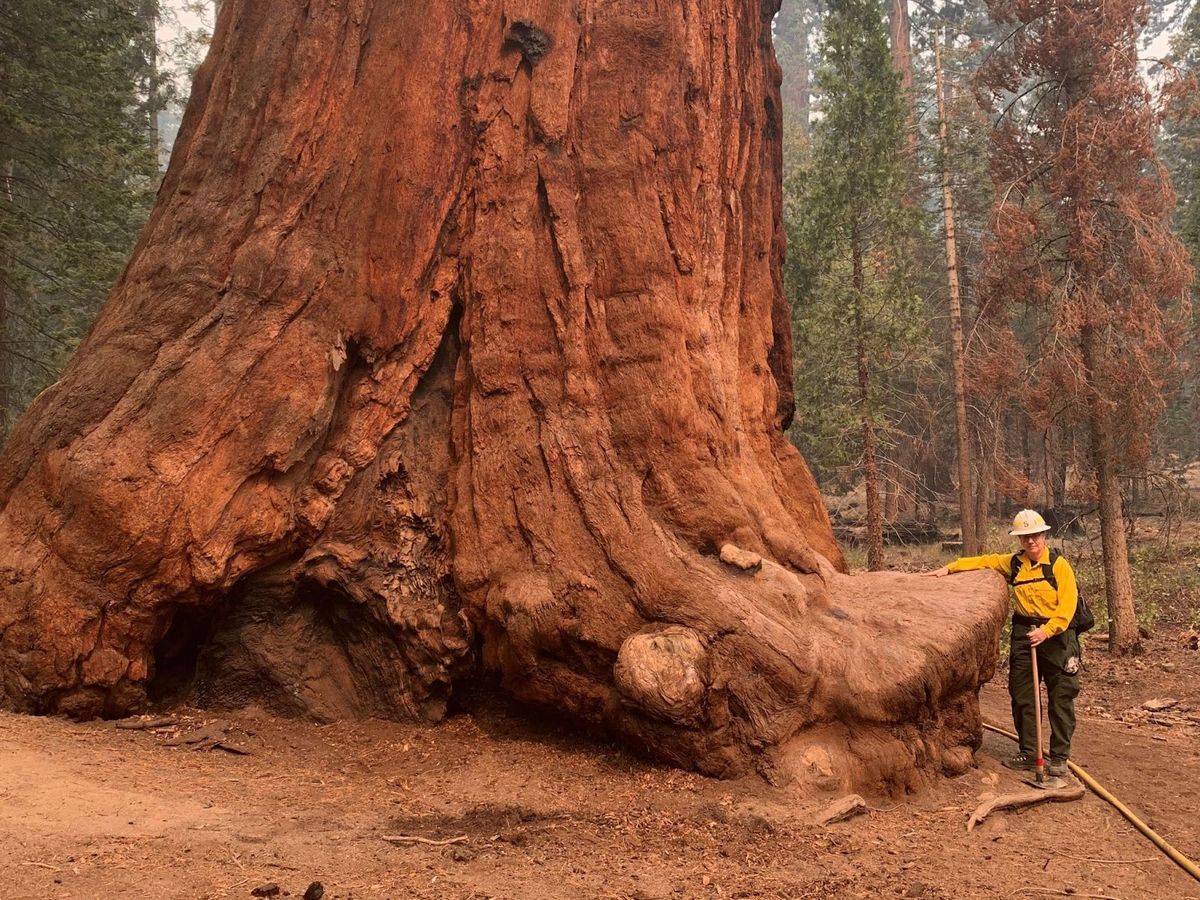When Giants Fall We Need To Listen
Writers on the Range

“God has cared for these trees …but he cannot save them from fools.”— John Muir
In just two years, wildfire has killed an estimated 13 to 19% of all mature giant sequoia trees. These most massive of trees grow only on certain western slopes of the Sierra Nevada, the mountain range that divides California’s Central Valley farmland from the Great Basin Desert.
The loss of so many “big trees,” as conservationist John Muir called them, is unprecedented.
Many of the best-known stands of giant sequoias grow more than 6,000 feet above sea level in three national parks — Sequoia, Kings Canyon and Yosemite. A visit to these immense trees typically begins with a drive up from Fresno. From the valley floor, Highway 180 curves into foothills, then winds onto steep, tree-covered mountainsides where cooler temperatures and higher humidity take the edge off the California sun.
The road passes through Kings Canyon National Park, where visitors get their first impression of the big trees. As Muir acknowledged, words aren’t sufficient to convey the awe of that first encounter with giant sequoias: “No description can give anything like an adequate idea of their singular majesty, much less of their beauty.”
He added, “Nothing hurts the big tree.” Except in our time: severe wildfire and the chainsaw.
Muir’s words helped inspire the national parks that have protected many sequoia groves from logging, but our concern about wildfires led to government-mandated fire suppression for more than 100 years. Through a federal agency’s zeal, the big trees are in trouble. In the Sierra Madre’s fire regime, developed over centuries, sequoia groves burned every 6 to 35 years. Wildfire thinned the smaller trees and converted fine fuels into soil nutrients.
Without fire, sequoia cones don’t open and spread their seeds. The same fire also creates openings in the forest canopy, giving seedlings the sunlight they need to survive.
Research shows that giant sequoia populations were “stable or increasing” from 500 B.C. through the 1800s. Then came the 1900s, when “there was a massive failure of giant sequoia reproduction.” Without fire, sequoia seeds stopped sprouting, while the buildup of highly combustible fine fuels on the forest floor, and the greater density of smaller trees, increased the risk of catastrophic wildfire.
As scientists began to understand the problem, the National Park Service implemented a prescribed burning program in giant sequoia groves. Evidence from recent wildfires indicates the program has been successful. Areas treated with prescribed fire burned less intensely, mature sequoias did not die and sequoia seedlings have since sprouted.
Clearly, sequoias need fire to survive.
The challenge is avoiding catastrophic wildfire, a challenge made difficult by today’s dense groves. According to Alexis Bernal, a researcher with the University of California at Berkeley, Sierra Nevada forests typically held about 20 sequoias per acre before 1860. Since then, fire suppression has allowed the growth of as many as 120 to 160 trees per acre.
Bernal advocates extensive logging before fire can resume its natural role. Emergency logging by government agencies has already begun in forests with sequoia groves, including clearcuts along roadways in Yosemite National Park.
Not everyone agrees that logging is the answer. Forest ecologist Chad Hanson, with the John Muir Project, calls Bernal’s approach an excuse to continue commercial logging of public lands. He believes sequoia deaths have been far lower than official estimates and that new trees can sprout even after severe fires.
Unfortunately, Congress has gotten involved. Kevin McCarthy, R-California, introduced the Save Our Sequoias Act in 2022 in the House. Dianne Feinstein, D-California, later introduced the act in the Senate. The bill would expedite mechanical “fuel treatments” by bypassing environmental laws.
We’re just lucky that record snowfall in the Sierra Madre threw a wet blanket on the initiative by reducing fire risk, as the bill has yet to be re-introduced in the current legislative session.
While the unprecedented threat to these priceless trees might be a rare instance in which “mechanical treatment” is justified, chipping away at environmental protections has rarely, if ever, proven beneficial for the environment— especially when politicians try to call the shots.
Giant sequoias need all the help they can get, but that help needs to be informed by good science.
